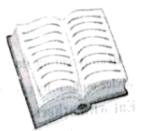People use colour expressions to show their feelings and describe the world. Many colour-related phrases are common in our speech. Let’s see where they came from.
•The Blues
The phrase is a short form of “the blue devils”, which also stands for sad feelings. This expression is also used to describe a type of jazz music that became popular in the south of America in the 1940s.
•Black Sheep of the Family
The phrase refers to a member of a family or a group who is unacceptable. In the old days, the black sheep were sold at a lower price than the white ones at the market, because their fleece(羊毛) could not be coloured. This made the black sheep an unwelcome member of the group.
•A Red-letter Day
A Red-letter Day is a day when something really exciting and memorable(难忘的) happens. It came from the practice of marking special western days, holidays, or other festivals in red on the calendar. Today, some calendars still use red numbers for special holidays, even weekends.
•Green with Envy
Writers such as Shakespeare in the 16th century used the colour green to stand for envy, but it was the Greeks who connected it with sickness caused by envy. When a person was full of envy, his or her body produced too much bile(胆汁), giving his or her skin a greenish colour. That is green with envy.
阅读以上信息,用恰当的单词完成下面的短文,每空一词。People use colours to express their feelings and describe the world. Many colour-related phrases are often
相似题推荐
【推荐1】Loan words
Our class project last month was to find out more about loan words, words which are borrowed by one language from another.
Everyone knows that there are thousands of loan words in English,as English is influenced by a variety of different languages, and, for that reason, it has a huge number of loanwords. It is said that 80 percent of English words come from other languages. Some speakers prefer using foreign words and phrases in place of English ones—they think they sound more interesting.
However, our project wasn’t about English. We had to find out about loan words in other languages. Do other languages also have loan words? The answer is “Yes!” Almost every important language in the world has a lot, although not as many as English.
Two Asian languages which have a lot of loan words are Japanese and Korean. Most of the loan words in Japanese come from Chinese and English. Chinese words, and the Chinese characters, first came into the Japanese language more than 1,000 years ago. Chinese characters which are used in Japanese are called kanji, and many Chinese Kanji have different meanings or pronunciations, as well as occasionally being written slightly differently.
In recent times, Japanese has also borrowed many words from Portuguese, German (especially medical words), French and Italian (especially words about music and food). Non-Chinese loan words are written in another alphabet, called katakana.
There are also a lot of Chinese words and characters in Korean. More recently, Korean has also taken a lot of words from English. However, when they are used in Korean, the meanings of many words and expressions change. For example, the English word “dessert” means something sweet that you eat at the end of a meal. In Korean, the word now means something you drink at the end of a meal—tea, coffee or a soft drink.
There are also Korean English expressions which mean nothing in English, like “cash corner”, which in Korean means a bank machine in the street where you can get money. Words and phrases like this are now called “Konglish”! (354)
1. What are loan words?2. Why does English have a huge number of loan words?
3. When did Chinese words first come into the Japanese language?
4. What does the English word “dessert” mean in Korean?
5. What are the last four paragraphs mainly about?
There are some differences between American English and British English. Some differences are quite interesting.
When my friend Lily from London used the word “larder”, I didn’t know what it meant. Realizing I didn’t follow her, she used another word. I finally knew she wanted to find something to keep some food. The next word came up when we were planning a lunch date. She jotted down the date and time in her diary, while I wrote it down on my calendar. If she called me on the phone, she would ring me up. But if the line was busy, she would say the line was engaged. She once told me a funny story about a pissed woman. I wondered what had made the lady angry. It turns out that pissed means drunk.
Most times, I could understand what Lily meant until last week I read a message written from Lily to me. I found out the British really like the letter“u”and have kept it in many words. However, we Americans have dropped it. Somewhere in our language history, we decided that “neighbor”, “color” and “favorite” were just fine without “u” next to the “o”.
Here is one more example. While I was in London for the first time last year, I lost my watch. When I asked my British friend what time it was, he said aloud as “a quarter to seven”, which made me speechless and lost in thought. After a few seconds, I finally realized it was “six forty-five”. Equally, 6:15 for us is translated as “six fifteen”, while the British would say “a quarter past six”. Although the differences between American and British English sometimes make me confused(困惑的), it’s really fun to explore more of them from my own experience.
1. Is the writer an American according to the passage?2. What does “larder” refer to(指代)?
3. What differences between American English and British English are mentioned in the passage?
4. As an English learner, do you think it’s necessary for you to learn the differences between American and British English? Why or why not?
【推荐3】It's a Western custom to say "bless you" after someone sneezes.
"Achoo!"
"Bless you."
This is a common exchange in English-speaking countries. When you hear someone else sneeze, it is polite to say "bless you", to which they should reply with "thank you". But where does this odd custom come from?
In fact, it dates back to medieval(中世纪的) Europe, specifically, the time of the bubonic plague(黑死病). The plague killed nearly one-third of Europe's population within three years(1347-1350). The first symptom of the bubonic plague was sneezing. At that time, people believed that if you sneezed, your soul might leave your body.
People didn't know how to cure the bubonic plague. They were simply encouraged to say "God bless you" and do other superstitious(迷信的) things, hoping the soul would go back into the body. And over time, "God bless you" was shortened to "bless you".
Of course, in modern times, we know that sneezing has nothing to do with the soul or any other superstitious thing. But just like so many other customs from the past, saying "bless you" has stayed with us for hundreds of years.
But you may be wondering—what if someone sneezes more than once? Well, you don't have to keep saying "bless you". In fact, if someone sneezes more than twice, or sneezes especially loudly, you may want to ask them if they're OK, or if they would like a tissue(纸巾).
Then again, you don't really need to say anything at all. People won't think you're rude if you forget to say "bless you". But they will also appreciate it if you do.
1. Where does the odd custom "bless you" come from?(回答问题,不超过9个词)2. Did people know how to cure the bubonic plague in the past?(回答问题,不超过4个词)
3. How long has "bless you" stayed with us?(回答问题,不超过10个词)
4. 把画线的句子翻译成汉语。
5. 给文章拟一个合适的标题。
Hello,I ________ Alice. 这是一个杯子。It ________blue.That is a key.It's blue, too (也). pen,a,this,black,is. And that's a green quilt.It's good.
根据短文内容,完成下列任务。
任务一:应 处和 处填入适当的单词。
1.
任务二:将 处画线部分的句子翻译成英语。
2.
任务三:将 处画线部分的单词连成句子。
3.
任务四:回答下列问题。
4. What color is the key?
5. What color is the quilt?
【推荐2】Hello, I am Julie. Four people are in my family. They are Bill, Mary, Judy and me. Bill and Mary are my parents. Judy is my twin (双胞胎) sister. We look the same (相同的) but we are different (不同的).
We like different colours. My favourite colour is purple. I have a purple pen and a purple pencil. And my desk and chair are purple. I like yellow,too. And I have a yellow cat. What is Judy’s favourite colour? She likes white best. She has a white dog and a white bag. And her telephone is white too.
We like different sports. I like ball games. And I can play basketball and football. But my favourite is table tennis. I’m good at it and I often (经常) play it with my classmates after class. What about Judy? She doesn’t like ball games and she can’t play them. She likes swimming very much. She often goes swimming with her friends in summer.
阅读短文,根据短文内容,回答下列问题。
1. What colour does Julie like?
2. How many kinds (种类) of ball games can Julie play?
3. Who does Judy go swimming with?
4. What does the passage mainly talk about?
Did you ever take True Colors Personality Test online? Well, I did today. The test is to tell what you are like from your favorite colors. There are some questions about people’s likes and dislikes. You can know your true color according to your answers. Your true color can best describe what you’re like and tell you what kind of story your life might be like.
If your color is red, your life may be like wuxia stories. In you life you always try your best to do better in everything than any other person. If your color is blue, your life may be like detective (侦探) stories. You can always get better answers through serious study. You are not very outgoing, but you like helping classmates, friends and family. If your color is yellow, your life may be like scary stories. You always bring surprises for others. Nobody knows what you are thinking about. If your color is green, you want everything around you to be wonderful. You always make hard decisions after doing a survey. Others may think you are cold because it’s difficult for you to show how you feel.
My color is pink. It says my life may be like love stories. I am very sensitive (敏感的), and I can understand others easily by reading their faces.Wow! Almost right!
Some people think personality tests are not really scientific. However, others love them so much. They want to learn more about themselves. After all, no one can decide what kind of person you are,but you.
| How the test works: ● It uses different colors to show what people are like. ●Test takers know their colors by | |
| True Colors Personality Test | ||
| The relations between colors and personalities | ||
| Colors | Stories | Personalities |
| Red | wu xia stories | They are always ready to |
| Blue | detective stories | ●They will learn better ●They are outgoing but helpful. |
| Yellow | scary stories | ●People know nothing about their ideas. |
| Green | / | ●They make hard decisions with the help of a survey. ●They |
| Pink | love stories | ●They find it |
【推荐1】Peter lost his friend's book. He felt very sad. Kate broke her mom's favorite cup.
We all make mistakes because we're human. And it's not always easy to get on well with everyone all the time. Sometimes we hurt people's feelings although we don't do it on purpose. Sometimes we hurt people's feelings on purpose,
An apology tells someone that we're sorry for our mistakes. It's a way to show that we'll try to do better in future.
Apologies are one of the tools to build good friendships and relationships. When you say “I'm sorry”, you probably feel bad because what you did or said hurt another person.
After apologizing, you might feel a little better.
阅读短文,根据短文内容,从短文后的五个选项中选出能填入空白处的最佳选项,选项中有一项为多余选项。
A.Then she cried
B.but we feel bad later
C.When you say “I'm sorry”
D.and you want to return his book
E.The other person will probably feel better,too
A.Mistakes. B.Apologies.
C.Sorry. D.Respect.
1.
2.
3.
4.
5.

A good book can teach you many things. It can open your eyes and clear your minds. It is important to get into a good reading habit, and it is necessary for you to get into a good reading habit too. Here are some ways to develop it.
Plan your time.
You should read 30 minutes every day. When time is set, nothing can change it. For example, make it a habit to read before breakfast or lunchtime.
Always carry a book.
Wherever you go, take a book with you. When you leave the house, make sure that you always carry a good book as well as your school things. Remember that a book always stays with vou.
Have a library card.
Have a library card and you can read as many good books as possible in the library. Make it a weekly trip to the library. This helps you spend less money on books.
Put it online.
One of the best ways to develop a good reading habit is to put some e-books into your net disc (网盘) and share them with your friends. Ask your friends and family to feel your joy or sadness and offer you suggestions.
1. How many ways are mentioned to develop a good reading habit?2. What does the underlined word “it” in Paragraph 1 refer to (指代)?
3. Translate the underlined sentence into Chinese.
4. 在文中找出与下面所给句子意思相近的句子。
If you do this, you can save more money on books.
5. Who may give you advice according to the last paragraph?
3.(A) What made people call a banana a banana and a pineapple(菠萝) a Pineapple rather than something else? Take the pineapple for example:
It does not come 1. f________ a pine tree(松树), and it is not an apple.
How did it come?
4.(B) When you look at a pineapple, you may think you are looking at one fruit. Actually, the pineapple is a group of tightly packed small fruit.
It is a native(本地的植物) to Brazil in South America. In 1493, Columbus Found the fruit on an island, on his voyage(航行) to the Caribbean(加勒比海). In the eyes of the Europeans, the curious(奇特的) new fruit looked like a pinecone(松球) outside and inside the fruit was like an apple. So combining(结合) the two they called it “pineapple”.
Today pineapple fields are in many parts of the world, 2 /in’klu:ding/ the West Indies, Florida, Northern Africa, Hawaii and Australia.6. (C) plant, about, meters, pineapple, the, grows,2, high. And it bears its fruits at any time of the year. The leaves of the pineapple plant are also useful, which can be made into cloth.
1. 根据句意及首字母补全单词 f2. 根据读音完成单词
3. 将文中(A) 处画线句子改为同义句
What made people call a banana a banana and a pineapple a pineapple
4. 将文中(B) 处画线句子译成汉语
5. 请在文中找出与下面英文释义相符的单词
6. 将文中(C)处划线部分连词成句
7. Where is the pineapple earliest grown?




